Railway Road, Darwen, Lancashire, BB3 2RJ
Described as the finest building in Darwen, this former Wesleyan Methodist Chapel first opened its doors on 30 March 1866. It was designed in the classical Corinthian style by the architect Edward Bates – also responsible for the nearby India Mill. In 1969, the old chapel was bought for £14,500 and converted into a supermarket. It later became a discount store, until its refurbishment by Wetherspoon in 2014.
A plaque documenting the history of The Old Chapel.
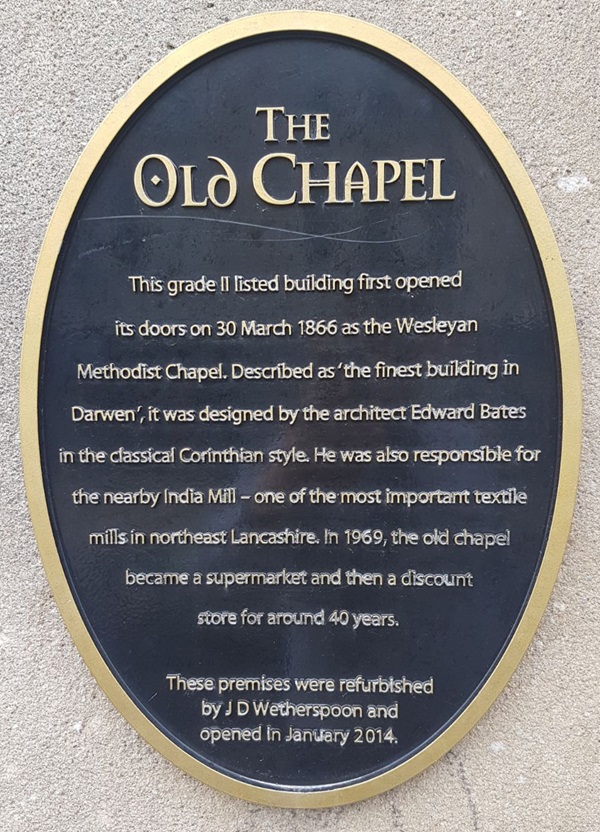
The plaque reads: This Grade II listed building first opened its doors on 30 March 1866 as the Wesleyan Methodist Chapel. Described as ‘the finest building in Darwen’, it was designed by the architect Edward Bates in the classical Corinthian style. He was also responsible for the nearby India Mill – one of the most important textile mills in northeast Lancashire. In 1969, the old chapel became a supermarket and then a discount store for around 40 years.
These premises were refurbished by J D Wetherspoon and opened in January 2014.
A print and text about the India Mill.
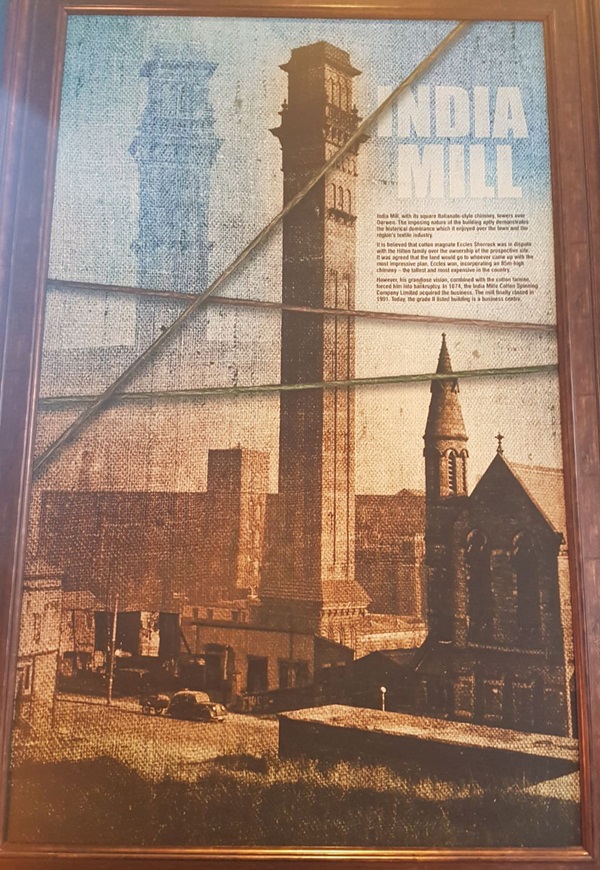
The text reads: India Mill, with its square Italianate-style chimney, towers over Darwen. The imposing nature of the building aptly demonstrates the historical dominance which it enjoyed over the town and the region’s textile industry.
It is believed that cotton magnate Eccles Shorrock was in dispute with the Hilton family over the ownership of the prospective site. It was agreed that the land would go on to whoever came up with the most impressive plan. Eccles won, incorporating an 85m-high chimney – the tallest and most expensive in the country.
However, his grandiose vision, combined with the cotton famine, forced him into bankruptcy. In 1874, the India Mills Cotton Spinning Company Limited acquired the business. The mill finally closed in 1991. Today, the Grade II listed building is a business centre.
Photographs and text about Joseph Walton.
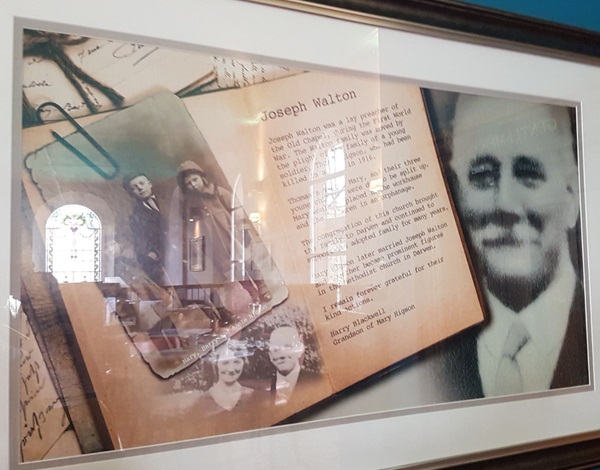
The text reads: Joseph Walton was a lay preacher of the Old Chapel, during the First World War. The Walton family was moved by the plight of the family of a young soldier, Thomas Higson, who had been killed in action in 1916.
Thomas’s widow, Mary, and their three young children were due to be split up. Mary would be placed in the workhouse and the children in an orphanage.
The congregation at this church brought the family to Darwen and continued to support its adopted family for many years.
Mary Higson later married Joseph Walton and together became prominent figures in the Methodist church in Darwen.
I remain forever grateful for their kind actions.
Harry Blackwell
Grandson of Mary Higson
Illustrations and text about Samuel Crompton.
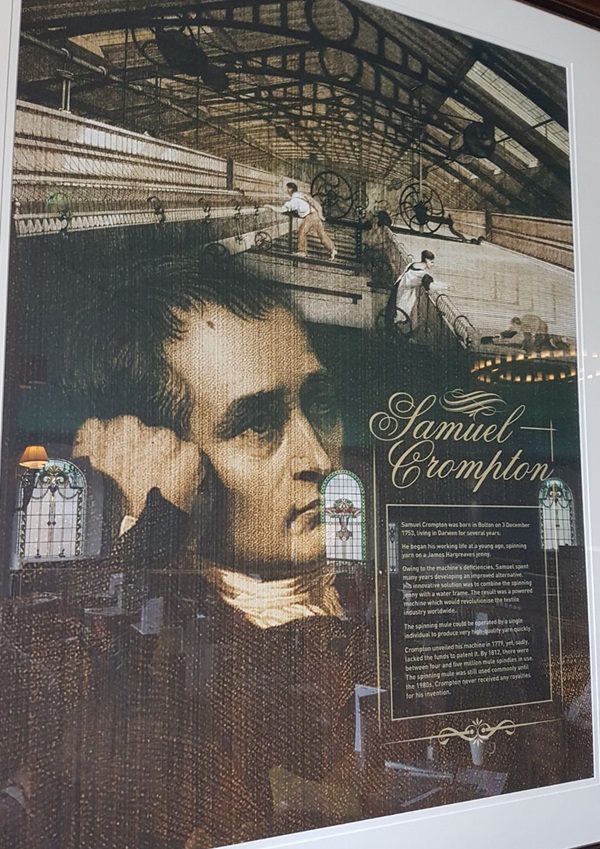
The text reads: Samuel Crompton was born in Bolton on 3 December 1753, living in Darwen for several years.
He began working life at a young age, spinning yarn on a James Hargreaves jenny.
Owing to the machine deficiencies, Samuel spent many years developing an improved alternative. His innovative solution was to combine the spinning jenny with a water frame. The result was a powered machine which would revolutionise the textile industry worldwide.
The spinning mule could be operated by a single individual to produce very high-quality yarn quickly.
Crompton unveiled his machine in 1779, yet, sadly, lacked the funds to patent it. By 1812, there were between four and five million mule spindles in use. The spinning mule was still used commonly until the 1980s. Crompton never received any royalties for his invention.
Photographs and text about the Darwen Spitfire.
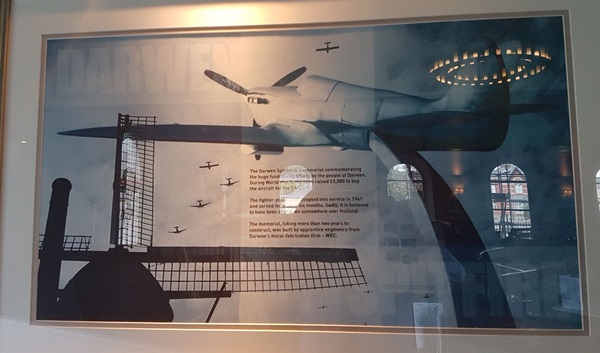
The text reads: The Darwen Spitfire is a memorial commemorating the huge fundraising efforts by the people of Darwen. During World War II, the town raised £5,000 to buy the aircraft for the RAF.
The fighter-plane was accepted into service in 1941 and served for around six months. Sadly, it is believed to have been shot down somewhere over Holland.
The memorial, taking more than two years to construct, was built by apprentice engineers from Darwen’s metal-fabrication firm – WEC.
Illustrations and text about Mr James Greenway.

The text reads: Towards the end of the 18th century, several printworks were erected in Over Darwen. The best known and most permanently successful of these were those established by Mr James Greenway of Darwen Bank.
It was in about 1776 that Mr Greenway commenced calico-printing at Livesey Fold, later he took on partners (Mr Charles Potter and Mr Maude) – and subsequent to his retiring, the firm was continued as Potter, Maude and Co, until about 1830.
A photograph of railway Road, Darwen, c1900.
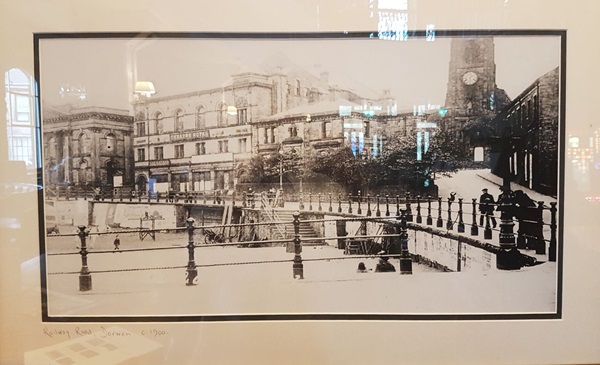
A photograph of Green Street, Darwen, c1900.
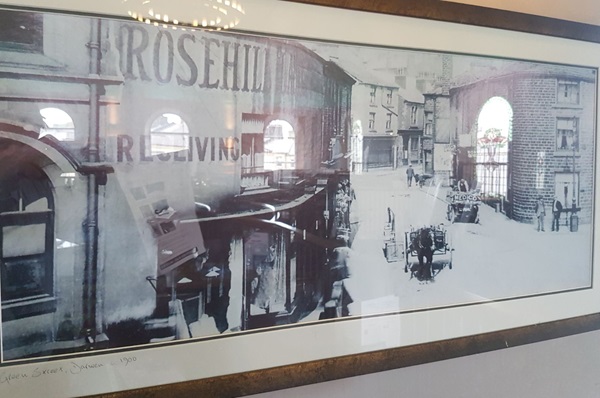
External photograph of the building – main entrance.
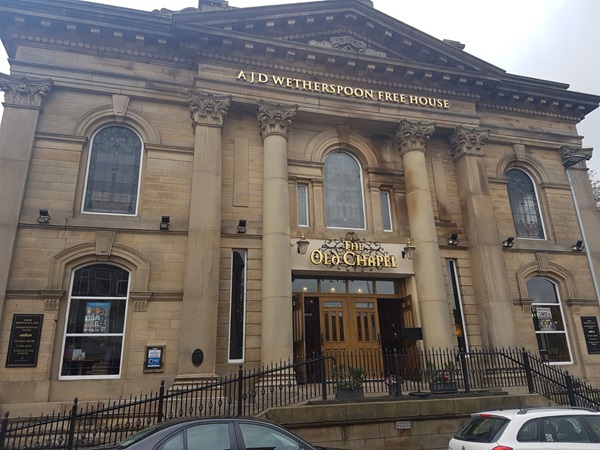
If you have information on the history of this pub, then we’d like you to share it with us. Please e-mail all information to: pubhistories@jdwetherspoon.co.uk